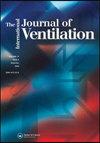科学实验用水喷头的方位与数量研究
IF 1.5
4区 工程技术
Q3 CONSTRUCTION & BUILDING TECHNOLOGY
引用次数: 0
摘要
在干燥气候中,蒸发冷却技术经常被用来代替空调,以提高能源效率和降低安装成本。蒸发喷嘴是一种蒸发冷却技术。蒸发喷嘴喷雾是一种用于各种应用的技术,包括冷却和加湿。从喷嘴组合、取向(水平和垂直)和雷诺数(13000 ~ 83000)三个方面考察了2 ~ 8个喷嘴的蒸发式喷嘴的性能。总的来说,结果表明相对湿度与雷诺数成反比。此外,喷嘴数量与相对湿度成正比。当垂直排列的喷嘴数量从2个增加到8个时,相对湿度上升到90%。对于8个喷嘴,垂直布置比水平布置产生的出口相对湿度高7.4%。目前研究的最高相对湿度为90%,在垂直方向上,雷诺数为13300时,有8个喷嘴。此外,还建立了水平和垂直相关性来预测相对于喷嘴方向的出口相对湿度。本文章由计算机程序翻译,如有差异,请以英文原文为准。
Study on orientation and number of water spray nozzles for scientific experimental application
Abstract In dry climates, evaporative cooling techniques are frequently used in place of air-conditioners to increase energy efficiency and reduce installation costs. An evaporative nozzle is a type of evaporative cooling technique. Evaporative nozzle spraying is a technique that is used in a variety of applications, including cooling and humidification. The performance of evaporative spray nozzles with a number ranging from 2 to 8 nozzles has been examined in terms of nozzle combinations, orientations (horizontal and vertical), and Reynolds numbers ranging from 13000 to 83000. In general, the results show that relative humidity is inversely proportional to the Reynolds number. Furthermore, the nozzle numbers are proportional to the relative humidity. As the number of nozzles in a vertical arrangement increases from 2 to 8, the relative humidity rises to 90%. For 8 spray nozzles, the vertical arrangement produces 7.4% higher outlet relative humidity than the horizontal arrangement. The current investigation’s highest relative humidity is 90%, which occurs for 8 nozzles in the vertical direction at Reynolds number 13300. Moreover, the horizontal and vertical correlations were developed to predict the outlet relative humidity with respect to the nozzle orientation.
求助全文
通过发布文献求助,成功后即可免费获取论文全文。
去求助
来源期刊

International Journal of Ventilation
CONSTRUCTION & BUILDING TECHNOLOGY-ENERGY & FUELS
CiteScore
3.50
自引率
6.70%
发文量
7
审稿时长
>12 weeks
期刊介绍:
This is a peer reviewed journal aimed at providing the latest information on research and application.
Topics include:
• New ideas concerned with the development or application of ventilation;
• Validated case studies demonstrating the performance of ventilation strategies;
• Information on needs and solutions for specific building types including: offices, dwellings, schools, hospitals, parking garages, urban buildings and recreational buildings etc;
• Developments in numerical methods;
• Measurement techniques;
• Related issues in which the impact of ventilation plays an important role (e.g. the interaction of ventilation with air quality, health and comfort);
• Energy issues related to ventilation (e.g. low energy systems, ventilation heating and cooling loss);
• Driving forces (weather data, fan performance etc).
 求助内容:
求助内容: 应助结果提醒方式:
应助结果提醒方式:


